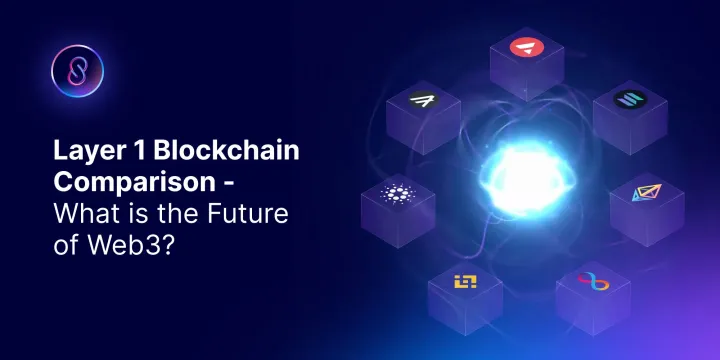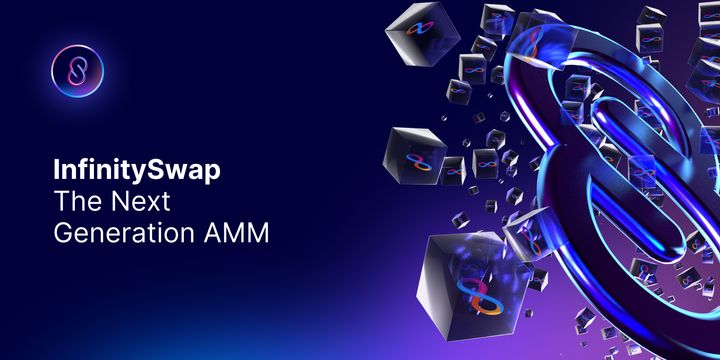Analysis: Comparison of the Internet Computer and Other Blockchains
The Internet Computer (IC) proclaims itself to be the reinvention of the internet, and its advanced cryptography puts it significantly ahead of other blockchains.

The Internet Computer (IC) proclaims itself to be the reinvention of the internet, and its advanced cryptography puts it significantly ahead of other blockchains. In this article, we take a look at how the IC blockchain compares to others.
Since the day of Bitcoin's genesis block in 2009, blockchain technology and innovations continue to grow exponentially, and many institutions have attempted to create a standard blockchain ecosystem that will not only solve scalability issues but will concurrently satisfy issues of speed and more importantly, security.
These issues have been the problems that most blockchains have to solve and we will see how some layer 1 blockchains compare to the IC via these metrics.
Some layer 1 blockchains we will cover alongside the Internet Computer in this article include: Ethereum, Binance Smart Chain, Cardano, Solana, Avalanche, and Algorand.

Consensus mechanisms
Before we analyze blockchains using measurable parameters, let us start by learning the mechanisms by which they operate.
Ethereum used a proof-of-work (PoW) mechanism like Bitcoin, before migrating to the proof-of-stake (PoS) consensus protocol. Not only is the PoW mechanism outmoded, but it also consumes considerably more global electricity and is very limited in the number of transactions it is able to process at a time.
Binance Smart Chain is based on a consensus mechanism called proof-of-staked-authority (PoSA). This consensus model supports a shorter block time and lower fees than the Ethereum model. You can read more about PoSA here.
Cardano is also based on the PoS consensus protocol, using Ouroboros. This selects participants in its staking pools to create new blocks based on how much staking they control in the network.
The Solana blockchain works on a proof-of-history (PoH) and proof-of-stake (PoS) mechanism. PoS allows validators to verify transactions to be added to the blockchain ledger, based on the number of coins or tokens they hold, while PoH allows those transactions to be time-stamped and verified very quickly.
Avalanche works by using a PoS consensus mechanism, known as the Snow consensus protocol. This protocol ensures that there is a balance in transaction speed, network capacity, decentralization, energy efficiency, and security.
Algorand’s blockchain architectural approach uses a pure proof-of-stake (PPoS) protocol based on Byzantine consensus. The influence of each user in the choice of a new block is proportional to the number of stake or tokens that the user has in the system.
The Internet Computer sets itself apart as the fastest and most powerful public blockchain network in the world that runs entirely on-chain and is positioning itself to replace conventional IT. The Internet Computer uses novel technologies such as Chain Key technology and a Threshold Relay consensus mechanism to run its platform. This technology combines several subnet blockchains into a single blockchain that allows it to scale the total volume of its hosted smart contracts (canisters), perform calculations, and exchange data, without limits.

Their ability to scale (scalability)
Blockchain scalability is the ability of a blockchain to support a variety of capabilities, including accommodating high transaction occurrences and allowing the growth of new users, without altering the overall performance of the blockchain.
Ethereum: Upgraded scalability
The recent upgrade of the ETH network from PoW (Ethereum 1.0) to PoS (Ethereum 2.0) means there will be an improvement in scalability. The Ethereum network could only support around 30 transactions per second in its previous version, which caused delays and congestion. But now, Ethereum 2.0 promises up to 100,000 transactions per second, which will be achieved by implementing shard chains/sharding that will be shipped to the network some time in 2023.
The further scalability of Ethereum is not yet complete, so we will consider this a work in progress.
Binance Smart Chain: Reasonable scalability
Binance Smart Chain uses a hybrid consensus mechanism called proof-of-staked-authority (PoSA). This mechanism adopts some popular PoS attributes, such as participants being the validators of transactions on the network. However, the number of validators is limited, supporting only 41 validators and around 300 Transactions Per Second (TPS), which is reasonable but not the best.
Cardano: Improving scalability
Cardano is still awaiting the release of Hydra, its Layer 2 solution. This follows similar methods to Ethereum's Layer 2 solutions, such as Arbitrum or Optimism. Hydra's goal is to provide faster transactions, higher throughputs, and lower fees. However, currently, the Cardano network uses the formats in PoS but can only handle around 250 TPS.
Solana: Unreliable network, unreliable scalability
Solana suffered six network outages last January and in 2021 suffered a significant “resource exhaustion,” demonstrating its unreliable scalability. Solana's PoH consensus protocol, combined with PoS, generates a huge amount of data (two terabytes) per year and relies on Arweave for data storage, plus other centralized Web2 technologies.
Avalanche: Varied scalability
Avalanche network is a platform built by three chains: Exchange Chain (X-Chain), Platform Chain (P-Chain), and Contract Chain (C-Chain), with each chain managing mini-networks, coming together to create a larger Avalanche network. Therefore, scalability depends on the number of subnets. Like Solana, Avalanche also uses Arweave to store data off-chain through centralized Web2 technologies, since it does not have its own storage facilities.
Algorand: Better scalability
Algorand uses a variation of PoS consensus called Pure Proof-of-stake (PPoS) through which the protocol selects proponents and block verifiers. It uses a self-selection algorithm to choose block creators. This is different from standard PoS protocols as this method speeds up the computation process and helps Algorand scale.
Internet Computer: Unlimited scalability
The Internet Computer’s infrastructure allows for indefinite scalability. It has independent node machines that combine to form independent subnet blockchains. The subnets host the IC’s canister smart contracts that combine code and data and divide execution into update and query calls. Each subnet can process these calls without relying on other subnets, allowing the network to scale as needed by adding nodes and forming new subnets, making IC scalability unlimited.

It is possible to classify the speed of calculations and processes of a blockchain as it has measurable parameters, unlike security or scalability. To calculate this factor, four (4) metrics are used: block size, block time, average transaction size, and transactions per second.
- Block size: the size of a block equals the amount of data it can store. Just like any other container, a block can only hold as much information as its size.
- Block time: the amount of time needed to create a new block in a blockchain.
- Mean transaction size: the average amount of size a transaction is on a blockchain network.
- Transactions per second: this refers to the number of transactions that a network is capable of processing every second.
With these metrics in place, we can easily calculate the speed at which transactions are processed on a blockchain network and their transaction finalities, a stage where transactions are guaranteed on the blockchain and verified as completed.
Ethereum: 15-30 TPS / 14 minutes finality
Ethereum generally managed 15-30 TPS, with a block finality time of 14 minutes. But Ethereum is working to correct this, and upcoming Layer 2 sharding and scaling solutions are expected to improve transaction speeds.
Binance Smart Chain: 300 TPS / around 1-minute finality
Binance Smart Chain, also known as the BNB chain, creates new blocks every 2.5 seconds, with a finality time of approximately 1 minute, and the ability to accommodate up to 300 TPS across 41 validators.
Cardano: 250 TPS / 10-60 minutes finality
Cardano allegedly processes 250 TPS, with a reported block finality time of 10 minutes to an hour depending on network congestion.
Solana: 50,000-65,000 TPS / 13-46 seconds finality
Solana theoretically boasts of processing up to 65,000 TPS. It suffered an outage when transactions peaked at 400,000 TPS in September 2021, raising concerns about its instability. Solana's theoretical transaction finality time is 400 to 500 milliseconds, but it actually takes 13-46 seconds for an “optimistic confirmation.”
Avalanche: 4,500 TPS (per subnet) / 2-3 seconds finality
Avalanche reported that its testnet can process 4,500 TPS, with the production-ready version eventually targeting 20,000 TPS. It also has a reported transaction finality time of less than a second but can take 2-3 seconds.
Algorand: 1,200 TPS / 4-5 seconds finality
Algorand theoretically reports that it processes 1,200 TPS and intends to increase it to 3,000 TPS for instant purposes. Algorand boasts a block finality time of 4-5 seconds, making it one of the fastest blockchains around.
Internet Computer: No limit / 1 second (web speed)
The Internet Computer uses its innovative Chain Key technology to complete transactions in 1-2 seconds by updating smart contract states. The IC can also provide responses to users in milliseconds by dividing the execution of the smart contract function into two types, known as update calls and query calls.
Update calls take 1-2 seconds to update and finish the smart contract states, while query calls work separately because any changes they make to the smart contract states are discarded after executing, allowing query calls to execute in milliseconds.
The Internet Computer continues to grow exponentially, with more and more nodes being added to the network. This will make the TPS of a single subnet be multiplied by the number of subnets created. For this reason, there is no limit to how far TPS can go on the IC.

Various transaction fees
Incentivizing blockchain validators and miners is key to encouraging users to engage in confirming transactions. The source of this funding comes from transaction fees.
Ethereum transaction fees took into account the amount of computing power that was needed to process a transaction, known as the gas fee, which also has a variable price measured in ETH. The current average transaction fee ranges from $3-$10 in ETH.
Binance Smart Chain transaction fee has hovered between US$0.2 and US$1 over the years and currently charges approximately $0.1895, according to ycharts.
Cardano network's current costs are around 0.17 ADA per transaction. This is equivalent to $0.066.
Solana has a fixed portion (about 50%) of each transaction that goes to the current leader who processes the transaction. The average Solana transaction fee is $0.00025.
Avalanche’s transaction fee was made to “prevent spam.” Fees are paid in AVAX, the native currency of the Avalanche ecosystem, and are burned to be destroyed forever. Their average transaction fee is $0.03 per transaction.
Both Algorand and the Internet Computer offer a fixed fee that depends on the value of their token (0.001 ALGO and 0.0001 ICP, respectively). Given the current market price of both, as of November 2022, the transaction fee for both networks is $0.0003 and $0.0005 respectively.

The Internet Computer can also play the role of engineering other blockchain networks for fully decentralized Web3 due to its Chain Key cryptography technology that combines multiple subnet blockchains into a single blockchain.
It is able to offer the world a new paradigm with the reinvention of the internet and the integration of Bitcoin. IC can also enhance Ethereum as a World Computer.
Conclusion
The summary is that the Internet Computer is the fastest blockchain with a transaction completion time of 1-2 seconds (web speed) and a query call of 100ms.
Its canister smart contracts serve the web and directly interact with users in real-time.
Its scalability is also unlimited, and it provides a highly adaptable blockchain that allows its community to decide on proposals through the Network Nervous System (an on-chain voting and governance system present on the IC) to manage the Internet Computer.
These are just some of the innovative features that set the Internet Computer apart from any other cryptocurrency blockchain.
Connect with InfinitySwap
Twitter | Website | Telegram | Discord | Github

*Disclaimer: While every effort is made on this website to provide accurate information, any opinions expressed or information disseminated do not necessarily reflect the views of InfinitySwap itself.





Comments ()